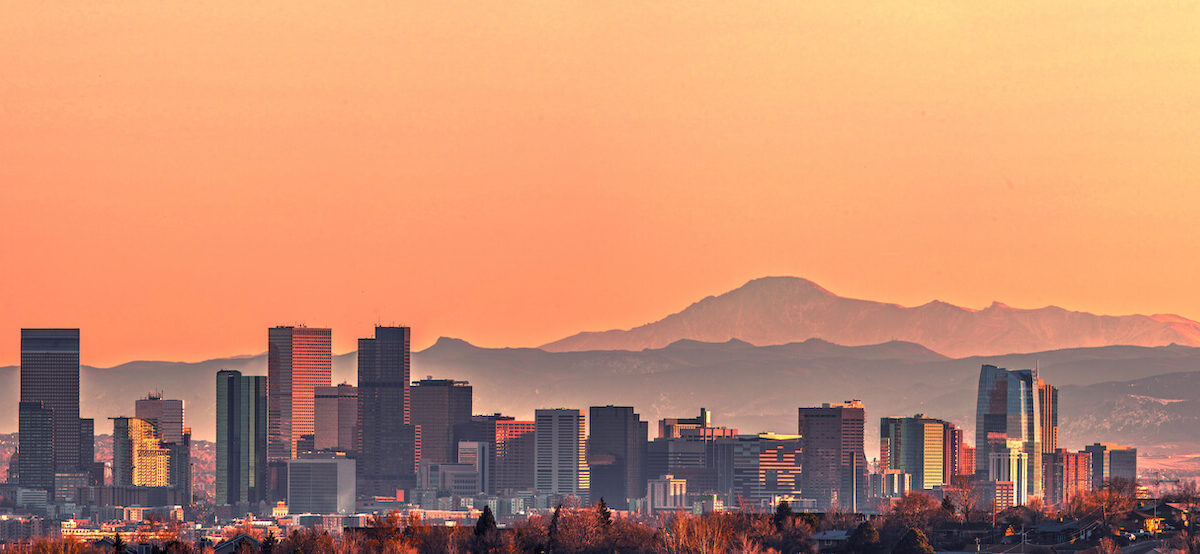Are the mountains calling your name? If you currently live at or near sea level, moving to a higher altitude can bring some unexpected challenges beyond the possibility of extra snow. With the right preparation, though, you can quickly adjust and start living your mountain dreams. It’s time to pack your bags (don’t forget the sunscreen) and start preparing for your next adventure!
What Is Considered High Altitude?
There is no exact measurement for what is considered high altitude. For baking, adjustments need to be made starting around 2,000 ft above sea level. For strenuous exercise, it can depend on your current fitness level. The CDC says that you should start making accommodations for the possibility of altitude sickness if you’ll be above 8,000 ft.
There is a difference between feeling the effects of altitude (for example, feeling out of breath when you go up a flight of stairs) and being at risk for altitude sickness or, worse, HAPE (High Altitude Pulmonary Embolism).
Most big cities sit at a moderate altitude. Denver, colloquially known as the mile-high city, is at 5,279 ft, and Utah’s mountainous capital Salt Lake City sits at 4226, so true altitude sickness isn’t really a concern. If you’re moving to a smaller town higher in the mountains — think Colorado’s historic mining town of Leadville at 10,152 feet above sea level — you may need to take precautions for the risk of altitude sickness.
How to Prepare for High Altitude
Your respiratory system works harder because of less oxygen, so your body needs more water to stay hydrated and healthy. Likewise, your metabolism works harder at altitude, so it’s important to eat plenty of healthy foods.
Altitude can suppress your appetite, so it’s crucial to eat at your normal times, even if you don’t feel hungry. Being weak and hungry can make you even more susceptible to feeling the negative effects of altitude!
And, of course, getting plenty of good quality sleep will help your body recover and ensure you feel your best.
How to Adjust to High Altitude
Once you move to a higher altitude, you’ll want to stick to your preparation plan: keep eating, drinking plenty of water, and getting enough sleep. Those steps will all help you physically adjust to your new altitude.
Exercise caution with exercise.
If you’re moving from near sea level to a higher altitude, you may need time to adjust to your regular exercise routine. This is because there is a lower density of oxygen molecules in the air. Keep the exercise minimal to start, and slowly ramp up the intensity.
It can take weeks to feel less out of breath and even months to feel totally normal, especially in high-cardio activities like running and cycling. If possible, start at a lower altitude and move up slowly. At the very least, plan a few rest days throughout your trip. If you’re moving permanently, don’t high-tail it to the mountains, as tempting as it may be! Take it slow to start.
Pack moisturizer.
Higher altitudes tend to be drier due to lower atmospheric pressure. Sweat will dry faster, and so will your skin. That means you need to moisturize! Your skin is going to dry out faster, and so will your lips. You might wake up with a bloody nose, even! A humidifier can help and will make your plants happy too.
Drink plenty of water.
As previously mentioned, your body works harder at high altitudes. Staying hydrated with plenty of water, and occasionally electrolytes, can help you feel better and keep your body happy.
Don’t forget to cover up!
High altitude is more exposed to the wind and sun. Sun is much more intense at higher altitudes, which leaves you at a higher risk for sunburn. Aside from sunscreen, sun shirts are great for outdoor exercise.
Covering up goes for your outdoor furniture, too. Your outdoor furniture is exposed to stronger elements and at risk of bleaching, sun damage, and wind. It can be helpful to treat your tables and chairs to protect them, or invest in covers to help them last longer.
Adjust your cooking and baking.
Lower atmospheric pressure and lower humidity affect your cooking, too. And the boiling point of water changes with altitude. You’ll have to adjust the temperature, ingredients, and cooking time of your baked goods.
You may need to experiment with your cooking to find the exact adjustments necessary for your culinary creations. However, a general rule is to increase the temperature, time, and liquid of your baked goods while decreasing the amount of sugar and leavening agent.
The Benefits of Living at High Altitude
Studies aren’t definitive (NIH), but it seems like people who live at higher altitudes may have lower risks of some diseases and be overall happier.
Better athletic performance is a possible perk of living at high altitude. Some studies indicate that training at a higher altitude can improve your body’s oxygen efficiency and production of red blood cells. There’s a reason one of the U.S. Olympic Training Centers is at almost 6,000 ft in Colorado!
You’re also likely to have more access to outdoor recreation. Many high-altitude towns and cities are meccas for outdoor recreation, with great access to hiking, skiing, rock climbing, and more.
Pack Your Hiking Boots, Not Your Old Sofa!
Make your move to the mountains with the help of CORT Furniture Outlet. With locations including Denver, Salt Lake City, Reno, and more, mile-high living doesn’t have to mean sky-high prices. CORT Furniture Outlet gives a second life to previously leased furniture, extending its life to provide a more eco-friendly option at a discounted price. CORT Furniture Outlet even offers financing options so that you can furnish your mountain home with the furniture you want!
Furnish your new mountain escape with CORT Furniture Outlet – and if the furniture you bring home doesn’t complete your new home like you envisioned, you have 14 days to return it. Browse our ever-changing inventory of new and gently used furniture and take advantage of up to 70% off original prices. Shop online or in-store today.






